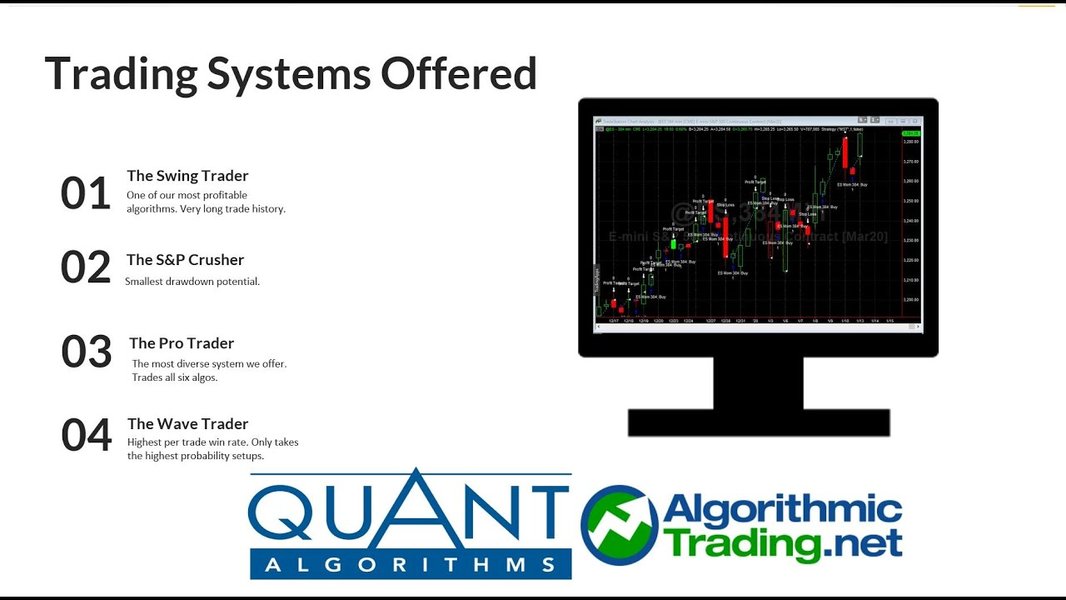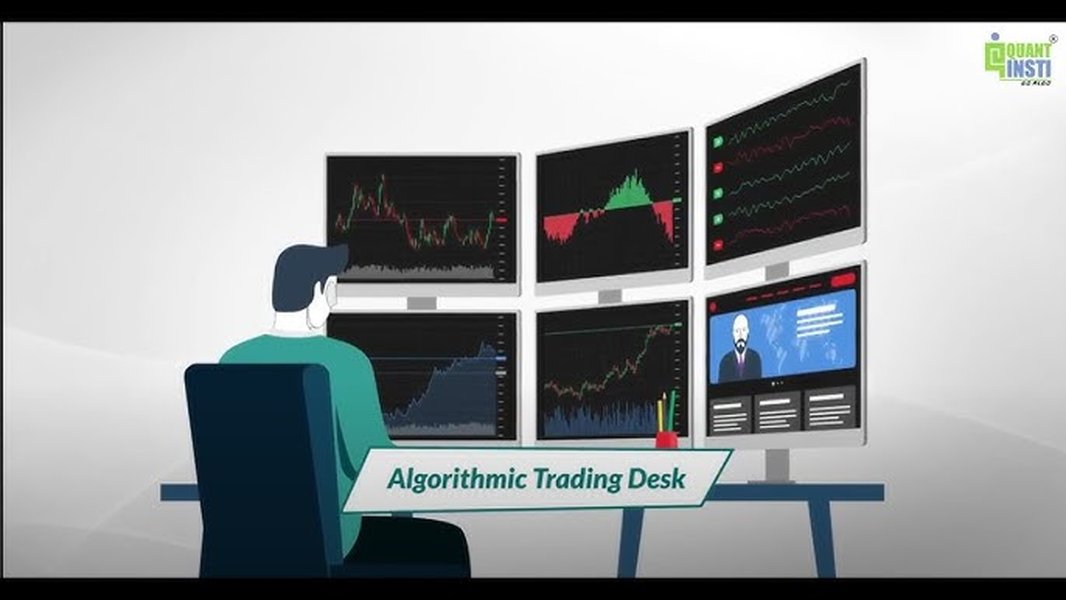
Unlocking Market Patterns: Which Quantitative Trading Strategy Reigns Supreme?
Exploring the data-driven world of quant trading to find strategies that align with your goals.
Quantitative trading, or "quant trading," leverages the power of mathematics, statistics, and computer algorithms to navigate the complexities of financial markets. Instead of relying on intuition or gut feelings, quants use data-driven models to identify potential trading opportunities, execute orders automatically, and manage risk systematically. As of 2025, these strategies are further enhanced by advancements in artificial intelligence (AI), machine learning (ML), and the analysis of vast datasets ("big data").
However, the quest for the single "best" quant trading strategy is nuanced. The effectiveness of any given strategy is not universal; it heavily depends on a confluence of factors including prevailing market conditions (trending, volatile, range-bound), an individual's or firm's risk tolerance, specific investment goals, available capital, and the level of technical expertise and infrastructure accessible. While some strategies have shown historically strong performance in backtests, real-world success requires rigorous testing, robust risk management, and continuous adaptation.
Key Insights into Quant Trading Strategies
- No Universal "Best": The most effective quantitative trading strategy is subjective and context-dependent, varying with market dynamics, risk appetite, and specific objectives.
- Prominent Strategy Types: Strategies like Trend Following, Mean Reversion, Momentum Investing, and Statistical Arbitrage are frequently cited due to their logical underpinnings and historical backtested performance across various market conditions.
- Crucial Success Factors: Rigorous backtesting, disciplined risk management, appropriate technological tools (like Python, specialized platforms), and continuous monitoring are essential for implementing and maintaining successful quant strategies.
Dissecting Popular Quantitative Trading Approaches
Quantitative strategies aim to exploit market inefficiencies and patterns identified through computational analysis. Let's delve into some of the most widely recognized and employed approaches:
1. Trend Following
Riding the Wave
Trend following is arguably one of the most established quant strategies. It operates on the principle that markets often move in sustained directions (trends) for certain periods. Algorithms identify the emergence of an upward or downward trend using indicators like moving averages (e.g., the 50-day crossing above the 200-day average), channel breakouts, or momentum oscillators. Once a trend is confirmed, the strategy initiates a position in the direction of the trend (long in an uptrend, short in a downtrend) and holds it until indicators suggest the trend is reversing or weakening.
- Concept: Identify and capitalize on established market trends.
- Ideal Market: Performs well in strongly trending markets (both bull and bear) across various asset classes like equities, futures, and commodities.
- Pros: Can capture significant profits during strong, sustained market moves. Relatively straightforward logic.
- Cons: Prone to "whipsaws" (entering and exiting trades frequently at losses) during choppy, sideways, or range-bound markets. Requires strict risk management (e.g., stop-losses) to cut losses when trends reverse unexpectedly. Backtests cited in sources suggest potential long-term annual returns of 8-12% with proper risk controls, but performance is highly dependent on the presence of trends.
2. Mean Reversion
Betting on the Return to Normal
Mean reversion strategies are built on the statistical observation that prices, volatility, or other financial metrics tend to revert to their historical averages over time. When an asset's price deviates significantly from its perceived mean or average value (becoming statistically "overbought" or "oversold"), mean reversion algorithms bet on its return to that average. Tools like Bollinger Bands, Z-scores, or oscillators (like RSI) are used to identify these extreme deviations.
- Concept: Exploit temporary price deviations, assuming prices will revert to their historical average.
- Ideal Market: Performs best in range-bound, non-trending, or oscillating markets where prices fluctuate around a central value. Often applied to assets known for less persistent trends, like certain currency pairs or volatility indices.
- Pros: Can generate consistent, smaller profits in stable or choppy market conditions. Often has a higher win rate than trend following, though profit per trade might be smaller.
- Cons: Can incur significant losses if a strong trend develops against the position (i.e., the price does not revert but continues its deviation). Requires precise timing for entry and exit. Effectiveness can depend on high-frequency data for short-term reversions. Backtests mentioned in sources suggest potential annualized returns up to 15% in suitable (e.g., stable bond market) environments.
3. Momentum Investing
Chasing Performance Leaders
Closely related to trend following, momentum strategies focus on the *rate* of price change. The core idea is that assets that have performed well recently will continue to perform well in the near future (and vice versa). Algorithms identify stocks or other assets exhibiting strong positive (or negative) momentum based on metrics like price appreciation over a specific period (e.g., 3, 6, or 12 months) or relative strength compared to peers. The strategy involves buying high-momentum assets and selling (or shorting) low-momentum ones.
- Concept: Buy recent winners and sell recent losers, assuming performance persistence.
- Ideal Market: Performs well in markets where trends persist and investor behavior leads to "herding" into winning assets. Growth-oriented market phases often favor momentum.
- Pros: Can capture strong returns during periods of sustained market direction and sector rotation. Backed by significant academic research.
- Cons: Vulnerable to sharp reversals or "momentum crashes" when market leadership changes abruptly. Can involve higher turnover and transaction costs. Requires careful selection of momentum metrics and lookback periods.
4. Statistical Arbitrage (Stat Arb)
Exploiting Tiny Price Discrepancies
Statistical Arbitrage encompasses a range of strategies that aim to profit from temporary mispricings between related financial instruments. Unlike pure arbitrage (which is risk-free), Stat Arb relies on statistical models and historical correlations suggesting that these price discrepancies will likely correct themselves. Common examples include:
- Pairs Trading: Identifying two historically correlated assets (e.g., stocks in the same sector like Coca-Cola and Pepsi) and trading them when their price ratio or spread deviates significantly from its historical norm (e.g., shorting the outperformer and buying the underperformer).
- Index Arbitrage: Exploiting tiny differences between the price of an index future and the aggregated price of the underlying stocks in the index.
- Basket Trading: Trading a basket of stocks against another basket or an index based on statistical relationships.
- Concept: Use statistical models to identify and profit from short-term mispricings between related assets.
- Ideal Market: Requires liquid markets where trades can be executed quickly. More effective when historical correlations hold.
- Pros: Often market-neutral (low correlation to overall market direction). Can provide relatively steady returns with lower volatility if models are accurate.
- Cons: Opportunities are often small and short-lived, requiring high trading frequency, low transaction costs, and significant capital. Models can break down during market stress or regime changes. Requires sophisticated quantitative skills and infrastructure.
5. Risk Parity
Balancing Risk Contributions
Unlike strategies focused purely on predicting price movements, Risk Parity is an approach to portfolio construction. It aims to allocate capital across different asset classes (e.g., equities, bonds, commodities) such that each asset class contributes equally to the overall portfolio's risk (typically measured by volatility or standard deviation). This often leads to higher allocations to traditionally less volatile assets like bonds, potentially using leverage to achieve target returns. The goal is improved diversification and smoother returns compared to traditional asset allocation methods.
- Concept: Allocate capital based on equal risk contribution from each asset class, rather than equal capital allocation.
- Ideal Market: Aims to perform reasonably well across various economic environments due to diversification benefits.
- Pros: Enhances diversification, potentially leading to better risk-adjusted returns and lower drawdowns over the long term. Systematic approach to portfolio construction.
- Cons: Performance can lag during strong equity bull markets. Relies on accurate risk estimation and correlations between asset classes, which can change. Use of leverage can amplify losses if not managed carefully.
Comparing Key Strategy Characteristics
Choosing a strategy involves understanding the trade-offs. The following chart provides a subjective comparison of the primary strategies discussed across several key dimensions. Note that these are generalizations, and actual performance and characteristics can vary significantly based on implementation details and market conditions.
This visualization highlights how different strategies present unique profiles. Trend Following and Momentum aim for higher returns in trending markets but carry higher risk. Mean Reversion targets consistency in range-bound markets. Statistical Arbitrage demands high complexity and data but aims for lower, steadier returns. Risk Parity focuses on balancing risk across diverse market conditions.
Visualizing the Quant Trading Landscape
To better understand how these strategies fit into the broader picture of quantitative trading, consider the following mind map. It illustrates the core components, strategy types, and essential considerations involved in this data-driven field.
This map shows that quantitative trading is a multifaceted discipline, combining various strategic approaches with critical operational and technological elements.
Strategy Summary Table
Here's a table summarizing the core concepts, ideal conditions, pros, and cons of the main strategies discussed:
| Strategy | Core Concept | Ideal Market Condition | Pros | Cons |
|---|---|---|---|---|
| Trend Following | Identify and follow established price trends. | Strongly trending markets (up or down). | Can capture large profits from sustained moves. Relatively simple logic. | Poor performance in sideways/choppy markets (whipsaws). Requires strict risk control. |
| Mean Reversion | Bet on prices reverting to their historical average after deviations. | Range-bound, non-trending, or oscillating markets. | Consistent profits in suitable conditions. Higher win rate potential. | Can incur large losses if a strong trend emerges. Requires precise timing. |
| Momentum Investing | Buy recent winners, sell recent losers based on performance persistence. | Markets with persistent trends and leadership. Growth phases. | Captures gains from assets with strong relative performance. | Vulnerable to sharp reversals (momentum crashes). Can have high turnover. |
| Statistical Arbitrage | Exploit temporary, small mispricings between related assets using statistical models. | Liquid markets where historical correlations hold. | Often market-neutral. Potential for steady, low-volatility returns. | Requires sophisticated models, low latency, significant capital. Models can fail. |
| Risk Parity | Allocate capital based on equal risk contribution from different asset classes. | Aims for balance across various economic environments. | Improved diversification, potentially smoother returns, better risk-adjusted performance. | May lag in strong equity bull markets. Relies on stable correlations and risk estimates. Leverage can increase risk. |
Insights from the Experts: Exploring Quant Strategies
Understanding the nuances of different quantitative trading strategies is key. This video provides an overview of several common approaches, discussing their logic, examples, and backtesting considerations. Watching expert discussions can offer valuable perspectives on how these strategies are viewed and implemented in practice, helping you grasp the practical challenges and potential rewards associated with each.
The video delves into strategies like mean reversion, trend following, and others, providing concrete examples and backtested results. This aligns with the broader theme that while various strategies exist, their application requires careful consideration of rules, settings, and historical performance validation.
The Quant Trader's Environment: Technology and Setup
While the algorithms drive the decisions, the physical and technological setup of a quant trader or firm is crucial, especially for strategies sensitive to speed and data quality (like HFT or certain Stat Arb types). Even for lower-frequency strategies, a robust infrastructure for research, backtesting, execution, and monitoring is vital. This includes powerful computers, reliable high-speed internet, access to clean historical and real-time data feeds, and potentially specialized software or platforms. The images below showcase examples of trading desk setups, highlighting the focus on multiple monitors for data visualization and system monitoring, which are common in professional trading environments.



This setup facilitates the complex workflow of a quant: developing models (often using languages like Python or R), rigorously backtesting them against historical data, deploying them into live markets via trading APIs or platforms (like QuantConnect, MetaTrader), and constantly monitoring their performance and the market environment. Access to low-latency data and execution infrastructure becomes a competitive advantage, particularly for high-frequency strategies where milliseconds matter.
Critical Factors for Success in Quantitative Trading
Beyond choosing a strategy type, several factors are critical for achieving success in the competitive field of quantitative trading:
- Risk Management: Perhaps the most crucial element. This involves defining position sizes, setting stop-losses, diversifying across strategies or markets, and managing leverage appropriately.
- Rigorous Backtesting: Strategies must be thoroughly tested on historical data, including out-of-sample periods, to assess potential performance and robustness. Overfitting (creating a model that fits past data perfectly but fails in live trading) is a significant pitfall to avoid.
- Market Adaptation: Markets evolve, and strategies that worked in the past may become less effective. Continuous monitoring and adaptation of models are necessary.
- Technology and Data: Reliable access to clean data (both historical and real-time) and a robust technological infrastructure for research, testing, and execution are essential.
- Expertise: A strong foundation in mathematics, statistics, programming (e.g., Python, C++), and finance is generally required.
- Costs: Transaction costs (commissions, slippage), data fees, and infrastructure costs can significantly impact profitability, especially for higher-frequency strategies.
Ultimately, successful quantitative trading involves a blend of sound theoretical strategies, meticulous implementation, disciplined risk control, and ongoing refinement.
Frequently Asked Questions (FAQ)
What is quantitative trading?
Is there one single "best" quant strategy?
What skills are needed for quant trading?
How important is backtesting?
What are the risks of quant trading?
References
-
Common Quantitative Investment Strategies - Investopedia
- Quantitative Trading Strategies - Quantified Strategies
- Quant Trading Strategies - Composer
- Quantpedia - The Encyclopedia of Quantitative Trading Strategies
- Trading Strategies - Quantified Strategies
- Top 10 Quantitative Trading Strategies with Python - Medium (Zodiactrader)
Recommended Reading
Last updated April 11, 2025